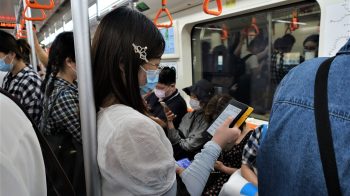Beyond magnifying glasses: High-tech options for the vision-impaired
Beyond magnifying glasses: High-tech options for the vision-impaired
This week, Marketplace Tech has been talking technology and reading. We’ve heard about how new gadgets are changing reading in school and how they’re changing reading education at home. We’ve talked about the impact of e-readers on the brain.
But what happens if your vision makes it tough to read at all?
Today, we profiled Spotlight Text, one digital option for people with vision loss. However, there are many more tools for low-vision readers out there:
There’s an e-reader app for that.
Some e-reader apps are made specifically for those with reduced vision. Apps like Spotlight Text and Read2Go allow readers to increase or decrease font size as much as they need to.
E-readers like the Kindle or iPad already allow low-vision readers to adjust font sizes and contrast settings on the device. Many also have text-to-speech functionality.
The BARD Mobile app from the National Library Service for the Blind and Physically Handicapped offers readers almost 50,000 Braille and talking books. And it’s free.
Phone it in.
There are countless magnification apps that use a smartphone’s camera and flashlight to enlarge and illuminate text. Some are free, like iRead or Magnificent, while VisionAssist is $5.99 and EyeSight is $29.99.
EyeNote is a free app that identifies the denominations of U.S. paper currency for those with low vision.
The iPhone — and other smartphones — remains a powerful tool for low-vision readers. As Paul Otterness, who suffers from glaucoma, wrote on the Glaucoma Research Foundation‘s blog: “The big news for people with low vision is that high tech, big print, voice control and screen reading are brought together in a single handheld device: the Apple iPhone — a fully functioning computer with high-resolution screen and multiple magnification capabilities, small enough to carry in my pocket.”
Spoken words.
Text-to-speech apps like Speak it!, $1.99, and Voice Dream Reader, $4.99, allow low-vision readers to listen to texts read aloud.
Not out of sight.
Different high-tech glasses are being made to help those with low vision read more easily. These glasses from Low Vision Readers are equipped with LED lights and rechargeable batteries.
Some companies have also been trying to make Google Glass accessible for the deaf. They are working on live subtitle technology.
These high-tech devices can be expensive and insurance companies don’t always cover the costs. So support groups have been cropping up around the country to loan out devices or provide them for free to people with low vision.
If you have low vision, we want to know: Which technologies or devices have been helpful to you? Let us know in the comments below!
There’s a lot happening in the world. Through it all, Marketplace is here for you.
You rely on Marketplace to break down the world’s events and tell you how it affects you in a fact-based, approachable way. We rely on your financial support to keep making that possible.
Your donation today powers the independent journalism that you rely on. For just $5/month, you can help sustain Marketplace so we can keep reporting on the things that matter to you.


















